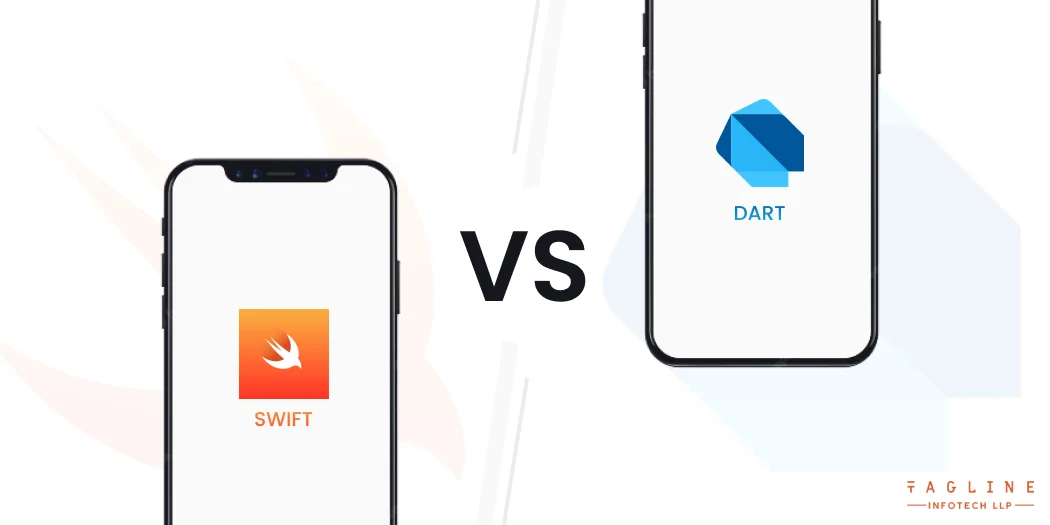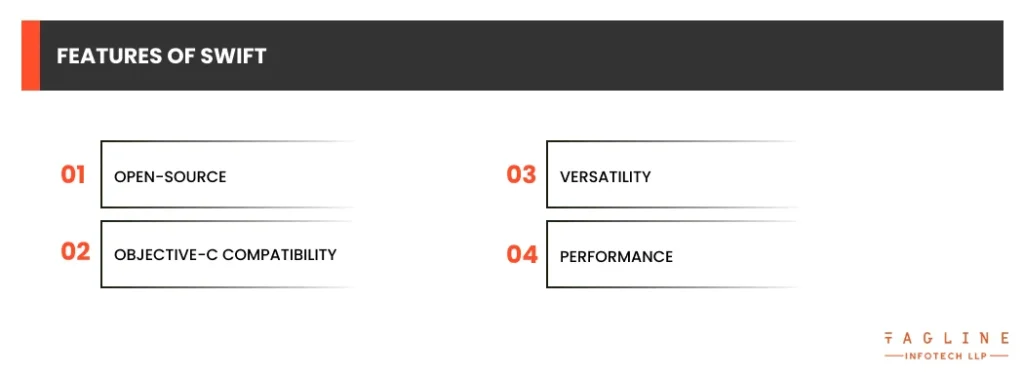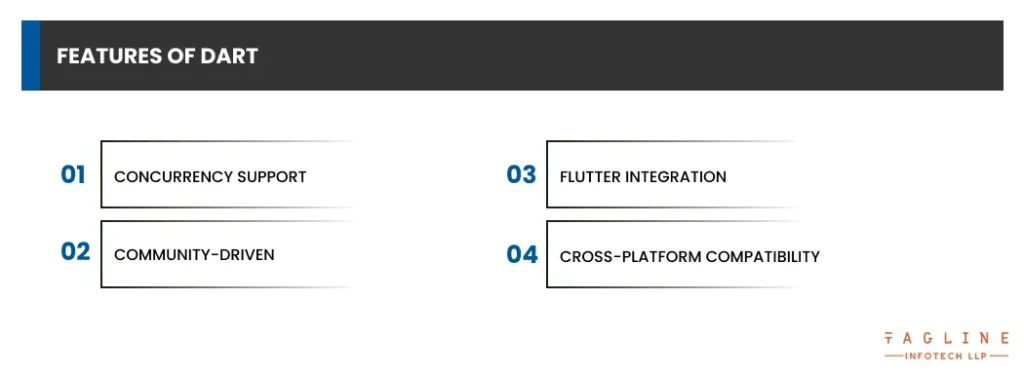Role of Python Libraries in Image Processing
October 30, 2025
Home >> Mobile App Development >> Swift vs Dart: Which One Is Better for IOS App Development

Quick Summary
In the ever-evolving world of programming languages and frameworks, the hunt for an ideal technology to craft exceptional and user-friendly mobile apps never truly ends. Among the contenders vying for supremacy, Swift vs Dart emerges as a comparison between two formidable app development technologies that cater to various requirements. By delving into the unique features, benefits, and limitations of each framework, you can make an informed choice for your app idea. In this post, we will explore the characteristics of these popular programming languages that have garnered significant attention in recent years.
Let’s get an overview of the comparison between Dart vs Swift. Dart and Swift are two distinct programming languages that offer unique approaches to achieving programming objectives. Each language comes with its set of characteristics, making them suitable for different purposes.
Choosing between Dart and Swift depends on the project’s requirements. If cross-platform development is the priority, Dart with Flutter is a compelling option. For iOS-centric applications, Swift’s ecosystem and performance make it the language of choice.
Swift is an open-source programming language introduced by Apple, specifically designed for native iOS app development. Launched in 2014, Swift swiftly gained popularity, surpassing Objective-C as the preferred language for iOS app creation. Its innovative approach, faster coding capabilities, and comprehensive documentation make it a favorite among developers. Besides mobile app development, Swift can be utilized for web, desktop, and server applications, extending its versatility across various platforms. This programming language powers a wide range of Apple devices, from iPhones and iPads to watches and TVs, ensuring seamless integration with the Apple ecosystem.

Want to Create stunning cross-platform mobile app?
Hire a skilled developer to build scalable and intuitive apps that will shape the future.
Dart is a programming language introduced by Google in 2011. Initially intended for web development, Dart gained prominence with the advent of Flutter, a cross-platform mobile application development framework. Dart serves as the primary language for Flutter, making it an attractive choice for building Android and iOS apps with a single codebase. This open-source mobile SDK has garnered significant attention, as developers and clients alike continue to seek the elusive ideal cross-platform solution.

As per the StackOverflow developer survey conducted in 2021, the developer community commonly uses Swift (5.1%) and Dart (2%) as their preferred programming languages. However, despite being less commonly used, Dart seems to have a higher satisfaction rate among developers, with 77% expressing their love for working with it, compared to Swift’s 63.56%.
Interestingly, the desire to work with Dart is exceptionally high, with 99% of people expressing their interest, whereas only 4.74% of developers love to work with Swift. This suggests that Dart has a strong appeal and interest in the developer community.
In terms of remuneration, Swift developers seem to earn higher than Dart developers, as Swift pays $58,910, while Dart pays $32,986, according to the survey.
Regarding technology adoption by companies, Swift has a higher presence in tech stacks, with 2208 companies, including well-known names like Cred, Apple, and Walmart, utilizing it. On the other hand, Dart is being used by 125 companies, with Google, CRED, and Mews among the notable ones.
Numerous articles compare iOS app development using Swift and Dart to analyze the disparities between the two technologies. While both share some common attributes, they diverge significantly in certain aspects. In the onboarding process, Swift requires Xcode installation on macOS for native iOS development, while Dart demands a more extensive toolkit, including Xcode, an IDE like IntelliJ IDEA or Android Studio, and a Mac device for Flutter development. In terms of testing, Dart offers a comprehensive testing system with UI and functional level tests, while Swift relies on XCTest for testing native iOS apps. The choice between Swift and Dart depends on the specific project requirements and preferences.
The first step in iOS app development involves the onboarding process, which includes setting up the necessary tools and environments to start coding.
Swift: For Swift app development, developers need to install Xcode, an IDE exclusive to macOS. Xcode provides all the essential tools and the SDK required for native iOS development with Swift. Thus, the setup is straightforward, requiring only the installation of Xcode on a macOS device.
Dart: Dart, on the other hand, requires a more extensive toolkit. Developers use Xcode for Flutter setup, but in addition to that, they also need to choose an IDE like IntelliJ IDEA or Android Studio, and a macOS device to compile a Dart binary for coding. While the setup is more involved than Swift, Dart for app development offers the benefit of cross-platform development with Flutter.
Both Dart and Swift provide solid testing options, but the approaches differ.
Dart: Dart offers a comprehensive testing system that allows developers to create various types of tests, including UI and functional level tests. Developers can write tests that the Dart driver executes, ensuring reliable and thorough testing for the Dart app.
Swift: Testing native iOS apps in Swift is made simple with XCTest, the built-in testing framework. XCTest enables developers to test UI modules, integration, performance, and more, providing a robust testing environment for Swift apps.
Ready to experience the limitless potential of Mobile Development?
As a dedicated Mobile App Development Company, we offer comprehensive and detailed solutions for all your app development needs.
When adding new features to an iOS app, developers need to reload and test it with a device or simulator to assess the impact of changes. Dart excels in this aspect with its hot reload functionality, providing near-instant visibility of alterations within seconds. On the other hand, Swift, in traditional native iOS app development, requires a lengthier process for introducing changes. Renaming a button, for instance, involves modifying the interface and rebuilding the native code, taking around 12 seconds for testing. With the advent of SwiftUI, hot reloads are now possible in Swift, and non-native solutions like InjectionIII offer quicker integration of new functionalities.
To accelerate iOS app development, integration plays a crucial role in streamlining the process. For Swift apps, XCode-integrated macOS devices, such as XServer or Jenkins, facilitate regular integration. On the other hand, Dart app integration relies on Nevercode, leveraging the Codemagic CI/CD tool to ensure a seamless integration experience. Both technologies prioritize efficient integration methods, enabling developers to deliver high-quality iOS apps with continuous integration practices.
When comparing Swift and Dart for user interface development, it’s crucial to mention Swift’s association with iOS-native elements, allowing seamless integration of native UI components. On the other hand, Flutter, as a framework for Dart, provides an extensive library of ready-to-use UI elements, including Material and Cupertino widgets. In many instances, using Swift for UI might not be necessary. Flutter-based UIs aim to be virtually indistinguishable from native Swift UIs, ensuring a consistent and familiar user experience from the user’s perspective. Flutter’s rich UI capabilities make it a compelling choice for cross-platform development, delivering visually appealing and responsive apps.
When considering stability, both Swift and Dart have demonstrated reliability in their respective domains. Swift, being the native language for Apple’s products, benefits from the tech giant’s support, ensuring consistent updates and improvements. On the other hand, Dart has gained traction with Flutter’s emergence, proving itself as a robust language for cross-platform development. While Swift’s stability is firmly rooted in its integration with Apple’s ecosystem, Dart’s stability is strengthened by its growing adoption and Google’s commitment to Flutter’s advancement. Ultimately, both languages offer stable environments, making them reliable choices for app development based on specific project requirements.
Also Read : Flutter vs Kotlin: Which one is more suitable for development?
Swift finds significant usage in high-profile applications such as Facebook and WhatsApp. The language’s suitability for iOS app development has made it a preferred choice for renowned companies, ensuring smooth and optimized performance on Apple devices.
Dart, on the other hand, has been employed in notable applications, especially through Google’s adoption. Companies like Google and Pickio utilize Dart for their app projects, showcasing its capabilities in building cross-platform applications with Flutter.
Both Swift and Dart have strengths that cater to different needs. Swift’s integration with Apple’s ecosystem makes it a powerful tool for iOS app development, while Dart, with the backing of Flutter, offers a compelling choice for cross-platform development. The decision between Swift and Dart depends on the specific requirements of the application and the target platform. There is no one-size-fits-all answer, and developers need to carefully consider their project’s objectives and constraints to make an informed choice. Ignoring either language would mean overlooking the unique advantages they bring to the table.
For beginners with little or no prior programming experience, Swift is generally considered to be relatively easy to learn. It was designed with simplicity and readability in mind, making it accessible to newcomers. Swift syntax is concise and resembles natural language, which can be helpful for those new to programming.
Yes, Dart is used for backend programming. Dart is a versatile programming language that was originally created by Google and has gained popularity for building web, mobile, and desktop applications.
Dart with Flutter's Hot Reload allows for quicker code iteration than Swift, especially when targeting multiple platforms. Swift is faster for iOS/macOS app development due to its tight integration with Apple's ecosystem.
Created with Solvase

Digital Valley, 423, Apple Square, beside Lajamni Chowk, Mota Varachha, Surat, Gujarat 394101
D-401, titanium city center, 100 feet anand nagar road, Ahmedabad-380015
+91 9913 808 2851133 Sampley Ln Leander, Texas, 78641
52 Godalming Avenue, wallington, London - SM6 8NW